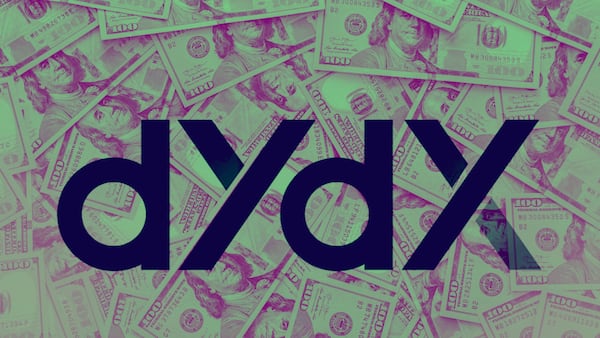- Crypto in the Solana ecosystem plummeted after the collapse of FTX.
- The blockchain has defied sceptics in the months since, and has largely recovered.
- Ecosystem developers say they’re in the midst of a “renaissance.”
The Solana blockchain has begun to recover after the collapse of FTX threatened to drag it down with Sam Bankman-Fried’s crumpling crypto empire.
Coupled with a suite of improvements, Solana’s prospects have never looked better, according to DeFi developers.
Funded in part by the largesse of the crypto exchange FTX, Solana was dealt a massive blow when FTX collapsed last November.
NOW READ: Coinbase-funded lawsuit against Tornado Cash sanctions was ‘nigh impossible to win’
On Nov. 4, 2022, almost $1 billion worth of crypto was invested in Solana’s DeFi protocols, according to DefiLlama data. Just two months later, it had dropped to just above $200 million. In the same span, the price of its native token, SOL, fell from $30 to less than $10.
Outside observers wondered whether it had been dealt a fatal blow.
Despite chatter from crypto watchers, developers who spoke to DL News insist they never lost faith.
‘None of the builders I know viewed FTX as an existential catastrophe.’
— Rooter
“None of the builders I know viewed FTX as an existential catastrophe,” Rooter, the pseudonymous co-founder of lending protocol Solend, told DL News. “All of the fundamentals that brought us here — cheap fees, fast transactions, a strong ecosystem — were still there.
“Just lost a very good exchange with Solana support, but there were others,” they said.
That faith has been vindicated this year.
Last week, the total value of crypto in Solana DeFi topped $320 million. Almost $10 million entered the Solana ecosystem in the week ending Aug. 7, the largest single week of inflows since March 2022, according to crypto research firm CoinShares. Since Jan. 1, it has enjoyed greater inflows than any other blockchain save Bitcoin.
And SOL has become one of the most liquid tokens on Coinbase, according to research firm Kaiko.
Solana proponents have started referring to “Solana 2.0″ and “Solana DeFi 2.0.”
How the collapse of FTX hurt Solana
Solana was founded in 2020 as a faster and cheaper competitor to Ethereum. During the 2021 bull run, when Solana and other Ethereum alternatives started to gain market share, Solana’s native token SOL hit $250 and the total value of crypto locked in Solana grew to almost $10 billion.
But Solana had longstanding ties with disgraced crypto mogul Sam Bankman-Fried and the pair of companies he founded: FTX and Alameda Research, a trading firm.
NOW READ: R3 CEO says CBDCs are ‘not evil’ as Republicans clash in first primary debate
Bankman-Fried was an early investor in Solana and perhaps its most prominent evangelist, telling Fortune it had “a shot at becoming one of the core layers on which most financial and informational transfers happen between applications in a natively web3 world.”
The billionaire crypto mogul co-founded Serum, a decentralised exchange on Solana, and both FTX and Alameda had billions in SOL and related tokens on their books when they collapsed.
When FTX imploded amid reports it had defrauded customers by using billions in deposits to plug a deficit at Alameda, the hit to Solana’s reputation and finances was massive.
NOW READ: Maple Finance returns to Solana after weathering $36m loan default linked to FTX blowup
“The FTX collapse was a massive blow that I think few other chains would’ve survived,” Ben Chow, co-founder of Solana protocols Meteora and Jupiter, told DL News.
Investors fled Solana DeFi and sold their SOL. Major projects decamped for other blockchains, such as the team behind the DeGods NFT collection.
Cindy Leow, co-founder of Drift, a decentralised exchange on Solana, recalled thinking that FTX’s downfall would be a boon to her protocol, with users spooked by the implosion of a centralised exchange moving to decentralised alternatives.
“I think the narrative post-FTX turned out the other way,” she told DL News. “People preferred to use … CEXes in other ecosystems, because they saw Solana as linked to whatever happened with FTX.
“Even VCs were asking us, ‘Are you going to stay on Solana? Why aren’t you moving to Arbitrum?’”
‘DeFi 2.0′
Renewed interest in Solana has come, in part, from a healthier suite of decentralised finance protocols, according to Mert Mumtaz, co-founder and CEO of Solana infrastructure startup Helius.
“DeFi 2.0 is kind of a renaissance of DeFi with teams like [MarginFi], Drift, Jupiter, Solend 2.0, etc., where there are no more predatory low-float tokens,” he said.
Due to its ties to venture capital and the questionable tokenomics of major projects such as Serum, critics have long typecast Solana as a top-down chain whose chief proponents were opportunistic financiers and developers looking to make a quick buck at the expense of retail investors.
“DeFi 2.0 is a very real thing on Solana. DeFi 1.0 sucked, and lots of teams had predatory tokenomics and aren’t active anymore or were propped up by Alameda,” MarginFi co-founder MacBrennan Peet told DL News.
Peet compared Solana’s current trajectory to that of Ethereum circa 2018, when that blockchain experienced its first boom in DeFi protocols, several of which now handle billions in user deposits.
“The same thing is happening with Solana, moving from early opportunistic teams to teams that are really solid with sustainable primitives,” he said.
“There’s a ton of solid teams on Solana in DeFi and outside DeFi that have been through the worst of it that are now hitting inflection points with their products.”
Among other things, Solana developers seem to be embracing a bottom-up approach post-FTX.
In the months since the crash, a group of crypto developers have banded together to salvage the technology that powered Serum after it was revealed the decentralised exchange was almost entirely controlled by FTX. The developers copied its code, and launched a new version of the Serum protocol called OpenBook, though it has struggled to gain traction.
NOW READ: FTX’s collapse created a new hope for OpenBook. Now Orca is gaining ground instead
“We’re starting to see elements of more community participation in governance within Solana,” Leow said. “The narrative is definitely changing from what we saw two years ago … with protocols thinking more about the bottom-up approach.”
Major projects have been more cautious in their approach to releasing tokens, according to Peet, who cited Jito, Kamino, and several other protocols as examples of DeFi 2.0.
“All of these projects are pre-token, and many of them are working on solid tokenomics that may start going live this year,” he said.
Outage free?
Rooter attributed the hype to progress made by the developers behind Solana’s largest DeFi protocols, a growing appetite for risk, and improved performance from the blockchain itself.
Once notorious for its frequent outages, Solana hasn’t gone offline since February, its longest such period since 2021.
The company behind Solana has attributed that improved performance to a series of upgrades meant to address its outage problem, including Ethereum-like fee markets that allow users to pay a higher transaction fee in exchange for priority in the transaction queue.
“It’s trading at the same price as it was in early ‘21, but doesn’t have the issues that it had during that same time period,” Zion Thomas, head of research at the crypto arm of investment firm TCG, said during a recent appearance on Lightspeed, a podcast that Mumtaz co-hosts.
Meanwhile, trading firm Jump Crypto is developing a highly anticipated validator client dubbed Firedancer, which is expected to increase Solana’s reliability and performance.
Thomas said Solana needs to take a page out of Ethereum’s playbook.
“Ethereum does an amazing job marketing all of their technical achievements,” he said on Lightspeed, referring to fanfare around the Merge, Ethereum’s transition to proof-of-stake technology. “I think that Solana should have had a similar SOL 2.0 movement and push.”
Challenges remain, however.
When the Securities and Exchange Commission, the US financial regulator, accused Coinbase of running a platform for buying and selling unregistered securities, it cited the exchange’s listing of SOL, among other tokens.
After losing market share during the 2021 bull run, Ethereum has strengthened its grip in the crypto industry, gaining market share relative to other smart contract blockchains as liquidity either leaves the industry completely or flees to safer havens.
NOW READ: Why Ethereum is so dominant — and why it’s not going anywhere
And Solana is still far from the highs it hit in 2022, to say nothing of the all-time highs it enjoyed in 2021.
“It just takes people time to want to deploy capital again after something like FTX,” Rooter said.
Aleks Gilbert is our New York-based DeFi Correspondent. Have a tip about Solana? Drop him a line at aleks@dlnews.com.



